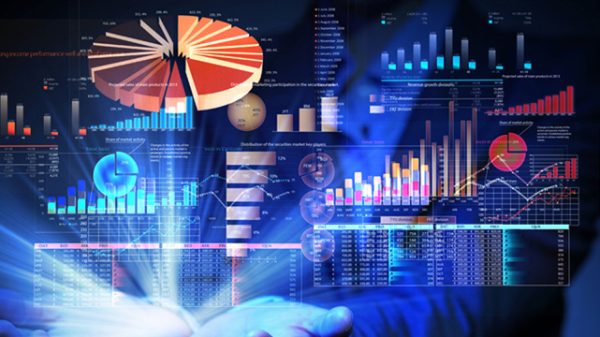The Evolution of the Modern Forex Market: From Bretton Woods to AI-Driven Trading
The foreign exchange (forex) market, as we know it today, traces its origins to the collapse of the Bretton Woods System in the early 1970s. While this post-World War II system had promoted stability and fostered economic recovery, its eventual demise paved the way for a more dynamic and flexible global currency market.
A pivotal moment in this transition occurred in August 1971, when U.S. President Richard Nixon suspended the dollar’s convertibility into gold, a move famously referred to as the “Nixon Shock.” This decision effectively dismantled the fixed exchange rate system that had underpinned Bretton Woods. Economic pressures, including declining U.S. gold reserves and persistent balance of payments deficits, had made the system untenable. The rigidity of fixed exchange rates further complicated countries’ ability to respond to changing economic conditions.
The end of Bretton Woods marked a watershed moment in forex trading. It heralded a shift towards floating exchange rates, where currency values are determined by market forces of supply and demand rather than being pegged to a fixed standard. This transformation unlocked a new era of currency trading, defined by increased flexibility and global monetary interdependence.
The Rise of Floating Exchange Rates
The adoption of floating exchange rates has been a defining characteristic of the modern forex market. Under this system, currency values fluctuate freely, responding to a range of economic factors such as interest rates, inflation, and political events. This flexibility has fostered a more dynamic trading environment, allowing participants to capitalize on price movements and increasing the overall liquidity of the market.
Floating exchange rates have also empowered central banks with more effective monetary policy tools. By adjusting interest rates, these institutions can influence their currency’s value in response to economic conditions. However, the same flexibility that creates opportunities for traders also introduces challenges, as periods of economic uncertainty or geopolitical tension can lead to heightened volatility in currency prices.
Technological Innovation: Transforming Forex Trading
Technology has revolutionized the forex market, making it more accessible, efficient, and transparent. The rise of electronic trading platforms, high-speed internet, and sophisticated algorithms has dramatically changed how currencies are traded.
Online trading platforms have democratized forex trading, allowing individual traders—once excluded from this space—to engage in a market historically dominated by large financial institutions. These platforms offer real-time data, advanced analytical tools, and the ability to execute trades with a few clicks.
High-frequency trading (HFT) has also become a significant force in the forex market. Using advanced algorithms, HFT firms execute large volumes of trades within fractions of a second. While this has boosted market liquidity, it has also raised concerns about fairness and stability, as rapid trading can exacerbate market fluctuations.
Mobile trading apps have further enhanced market accessibility, enabling traders to manage their positions from virtually anywhere. This shift has increased market participation and cemented the 24-hour nature of forex trading, making it a truly global, around-the-clock endeavor.
The Role of Artificial Intelligence
Artificial intelligence (AI) and machine learning are now at the forefront of modern forex trading. These technologies analyze vast amounts of data to identify patterns and forecast price movements, driving the development of sophisticated trading strategies. AI’s ability to process data at scale has not only enhanced prediction accuracy but also improved risk management, making it an invaluable tool for traders looking to stay ahead in a highly competitive environment.
Major Currency Pairs: The Powerhouses of Global Forex Trading
Today’s forex market is dominated by a select group of major currency pairs, which account for the majority of global trading volume. These pairs typically involve the U.S. dollar alongside other major currencies like the euro, British pound, Swiss franc, and Japanese yen. The EUR/USD pair alone represents about 20% of all forex transactions, followed by other high-liquidity pairs such as USD/JPY, GBP/USD, and USD/CHF.
Commodity-linked currency pairs, like USD/CAD, AUD/USD, and NZD/USD, are also significant players in the market, particularly in countries reliant on commodity exports. The prominence of these major pairs underscores the economic influence of the countries involved, with the U.S. dollar maintaining its status as the world’s primary reserve currency.
However, the global currency landscape is evolving. The rise of emerging market economies and the increasing internationalization of currencies like China’s yuan suggest that the composition of major currency pairs may shift in the future.
Conclusion: The Future of Forex
The forex market stands as the largest and most liquid financial market in the world, with daily trading volumes reaching a record $7.5 trillion in 2022, according to the Bank for International Settlements (BIS). As new technologies—especially AI—continue to shape the industry, the forex market is poised for even greater growth and sophistication in the years ahead. Traders, equipped with cutting-edge tools and strategies, are positioned to navigate this dynamic landscape as it continues to evolve.
In sum, the modern forex market is the product of decades of transformation, from the fall of the Bretton Woods System to the rise of AI-driven trading. Its evolution reflects the broader changes in global finance and technology, positioning it as a cornerstone of the international financial system.
`); } else { $(‘.blur’).css({ ‘background’: ‘linear-gradient(95deg, #4e4e4e 25%, #000 45%, #bbb 75%, #FFFFFF 100%) 98%/200% 100%’, ‘text-transform’: ‘inherit’, ‘-webkit-background-clip’: ‘text’, ‘background-clip’: ‘text’, ‘-webkit-text-fill-color’: ‘transparent’ }) $(“.wpb_content_element”).append(`
Want to read more?
Click on the button below to access all premium content articles by purchasing one of our educational packages
GET PREMIUMWant to read more?
Click on the button below to access all premium content articles by purchasing one of our educational packages
GET PREMIUMThe post The Modern Day Forex Market appeared first on FinanceBrokerage.
























